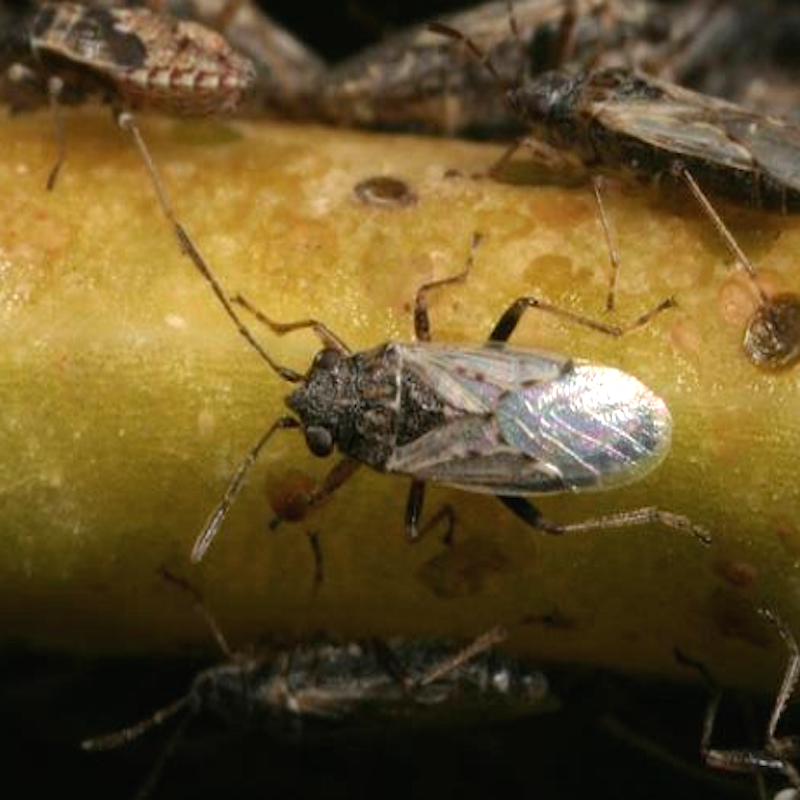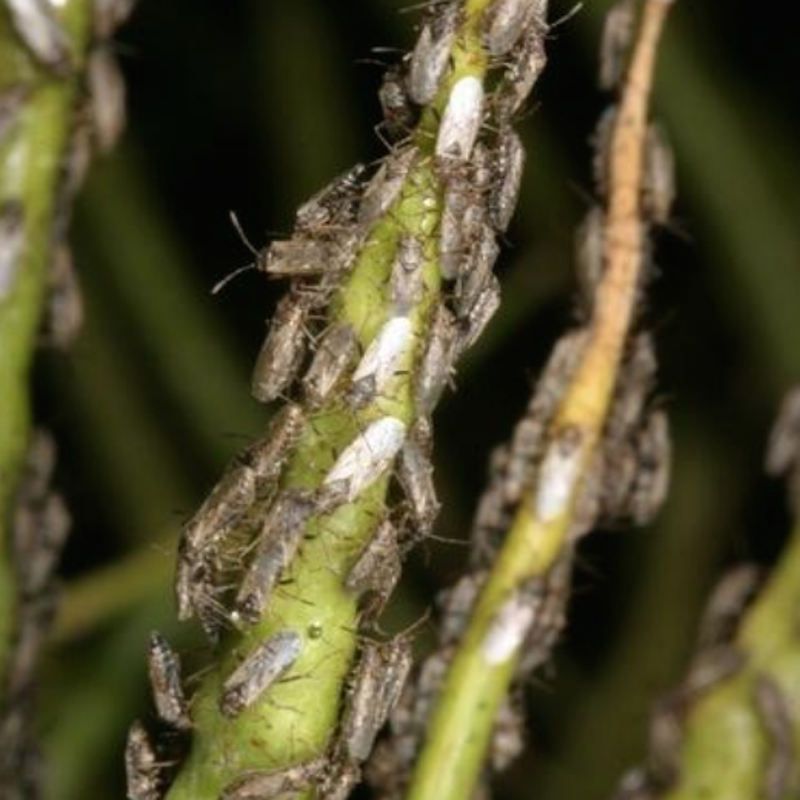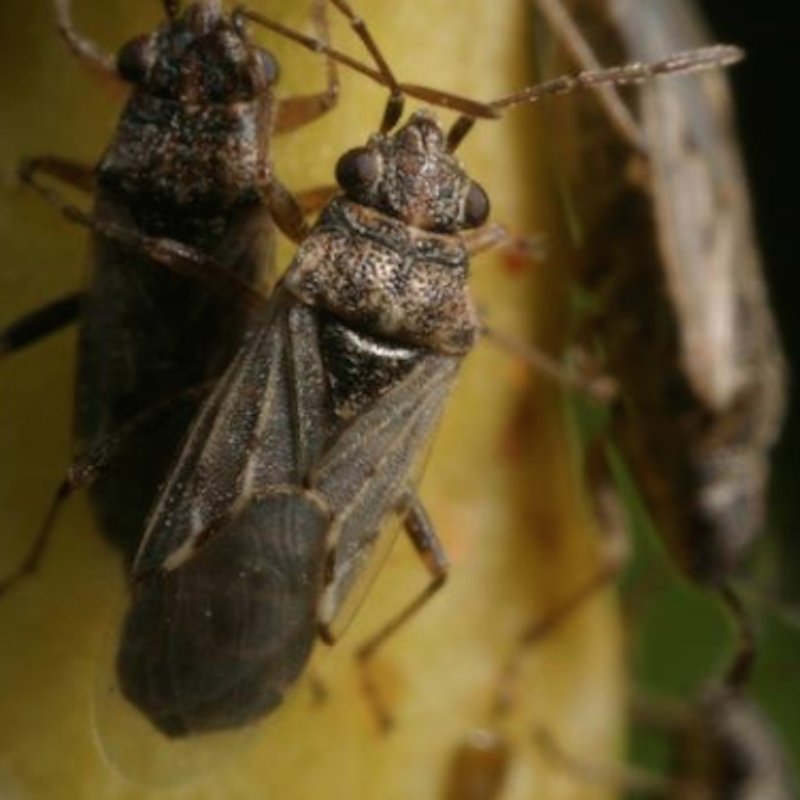
False chinch bug


False chinch bugs, Nysius spp., occur in weedy pastures, fields, or other noncrop areas throughout Kansas. They typically feed on plants in the mustard family. When preferred foods dry up because they mature or are killed with herbicide, the insects migrate in masses to succulent plants nearby. They usually attack soybeans and sorghum but also consume cotton, canola, and corn. In canola fields, nymphs can be found under decomposing wheat stubble during the day. Large numbers of insects present in or adjacent to agricultural crops can be problematic.
False chinch bugs are often mistaken for chinch bugs, bigeyed bugs, and other seedbugs in the Lygaeidae family. Adult false chinch bugs are gray or brown, slender, and 1/8 to 1/6 inch long. Like other Hemiptera, forewings are partially thickened and membranous. When folded, wings form a fairly well-defined ‘x’ at the back of the body. False chinch bug eggs have a pinkish hue and are deposited in cracks in the ground or around the base of host plants. The immatures (nymphs) are small at first. As they grow, they turn mottled brown with a darker head and thorax and orange spots on the abdomen.
